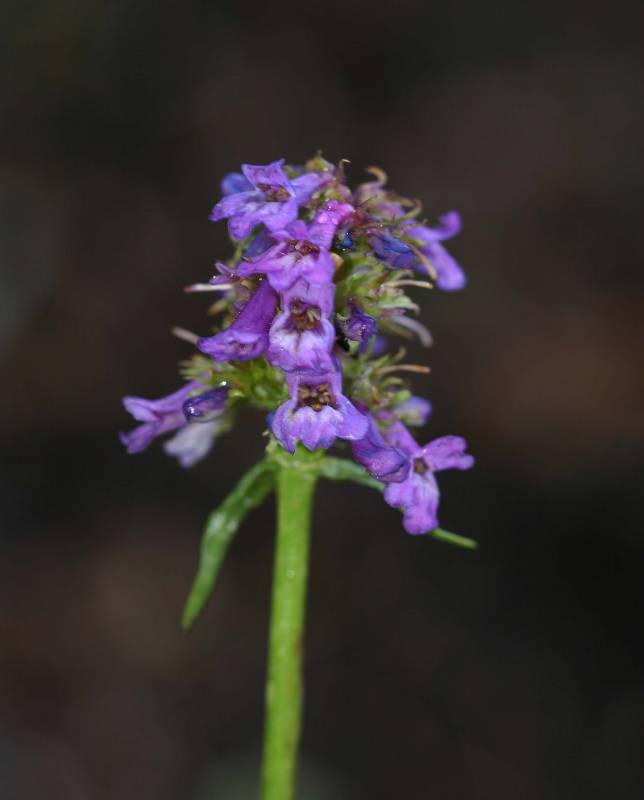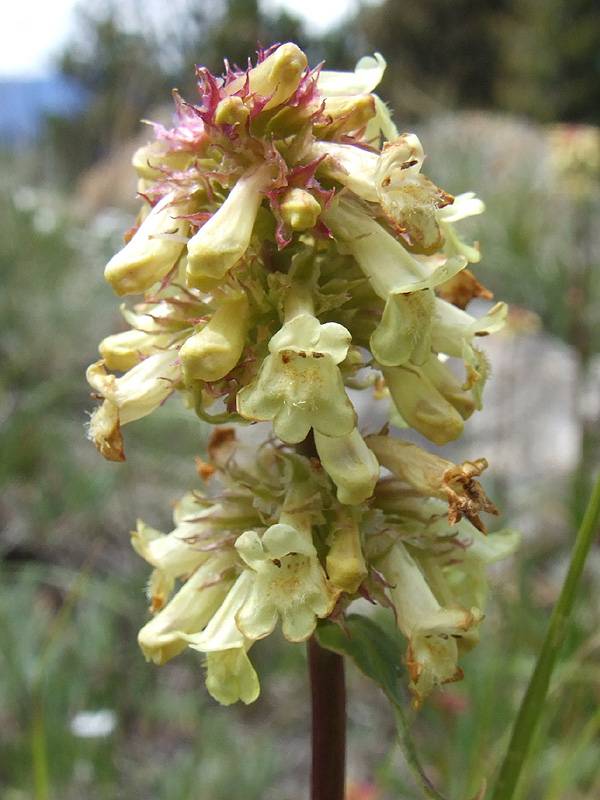Penstemon washingtonensis
Penstemon confertus
Washington beardtongue
lesser yellow beardtongue
Leaves opposite, entire, the basal ones well-developed and forming rosettes, 2.5-6 cm. long and 5-18 mm. wide;
cauline leaves few, sessile, often reduced.
Leaves opposite, entire, the lower ones petiolate, up to 15 cm. long and 2.5 cm. wide and forming a rosette;
cauline leaves sessile, lanceolate to oblong-lanceolate, up to 10 cm. long and 2.5 cm. wide.
Inflorescence of 1-3 dense verticillasters;
calyx 4-6 mm. long, the 5 segments tapered, with scarious margins;
corolla deep blue or occasionally pale yellow, glandular-hairy, 9-12 mm. long, the tube narrow, only 2-3 mm. wide at the mouth, the raised portion of the lower lip bearded;
pollen sacs glabrous, sub-rotund, 0.5-0.6 mm. long, wholly dehiscent, becoming opposite;
staminode bearded toward the expanded tip.
Inflorescence of 2-10 compact verticillasters, the lower remote;
bracts of the inflorescence with uneven margins;
calyx 3-5 mm. long, the 5 segments with broad, uneven margins and a abrupt, slender tip;
corolla ochroleucous or light yellow, 8-12 mm. long, the tube narrow, 2-3.5 mm. wide at the mouth, the short limb weakly bilabiate, the staminode and raised lower petal bearded;
pollen sacs purple, glabrous, 0.4-0.7 mm. long, becoming opposite.
Capsule 4-5 mm. long
Capsules 4-5 mm. long.



